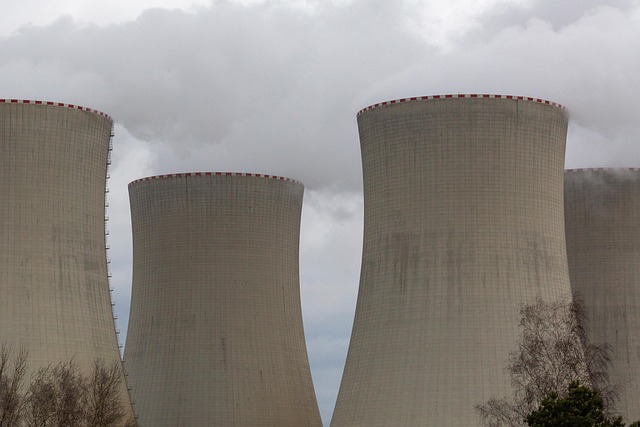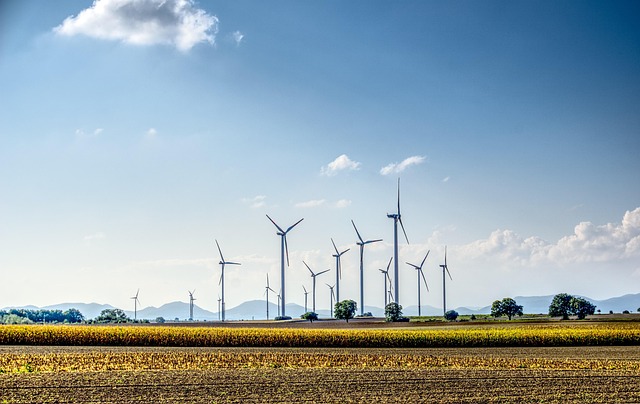Building Resilient Communities with Renewable Power Solutions
In an age where climate change and environmental degradation pose significant threats to our way of life, the transition to renewable energy sources has never been more crucial. Communities worldwide are recognizing the vital role that renewable power plays not only in combating climate change but also in enhancing community resilience. This article explores the importance of renewable power solutions in building resilient communities, examining various strategies, benefits, and successful examples across the globe.
Understanding Community Resilience
Community resilience refers to a community’s ability to prepare for, respond to, and recover from adverse situations, such as natural disasters, economic downturns, or health crises. A resilient community is characterized by strong social ties, diverse economic structures, and the ability to adapt to change. In recent years, the need for resilience has become increasingly evident as communities face the growing impacts of climate change, including extreme weather events, rising sea levels, and more frequent natural disasters.
Renewable energy sources, such as solar, wind, hydro, and biomass, provide an opportunity for communities to increase their resilience by ensuring energy security, reducing dependence on fossil fuels, and fostering economic sustainability. By embracing renewable power solutions, communities can mitigate the adverse effects of environmental changes, enhance their adaptive capacity, and create a more sustainable future.
The Role of Renewable Power in Enhancing Resilience
Renewable power solutions contribute to building resilient communities in various ways:
Energy Independence
Many communities rely heavily on centralized fossil fuel-based energy systems, which can be vulnerable to disruptions caused by natural disasters, geopolitical instability, or economic fluctuations. By investing in renewable energy sources, communities can enhance their energy independence. For instance, local solar or wind installations can generate electricity on-site, reducing reliance on external energy supplies and creating a more self-sufficient energy system. This independence is particularly critical during emergencies when conventional energy infrastructure may be compromised.
Decentralized Energy Systems
Renewable energy sources often lend themselves to decentralized energy production, allowing communities to generate power locally. Distributed energy systems, such as microgrids, can be developed to provide electricity even when the main power grid is down. These microgrids can operate independently, ensuring that essential services remain functional during crises. The ability to draw on local resources can significantly reduce response times and improve overall community resilience.
Economic Benefits
Investing in renewable energy not only fosters energy independence but also creates jobs and stimulates local economies. The renewable energy sector is rapidly growing, providing numerous employment opportunities in manufacturing, installation, maintenance, and research. Moreover, local investments in renewable power systems circulate money within the community, boosting local businesses and reducing energy costs for residents. Over time, these economic benefits contribute to a more resilient and self-reliant community.
Environmental Benefits
Renewable energy sources produce little to no greenhouse gas emissions, thus helping communities combat climate change and reduce their carbon footprint. By transitioning to clean energy solutions, communities can mitigate the impacts of climate-related disasters, such as floods, droughts, and heatwaves. Additionally, investing in renewable power promotes biodiversity and helps protect ecosystems, further enhancing resilience against environmental degradation.
Social Cohesion
Building renewable energy projects often involves community engagement and collaboration. This process can foster social ties and strengthen the sense of community. By involving residents in decision-making and project development, communities can cultivate a sense of ownership and pride in their renewable energy systems. This unity not only enhances community resilience but also empowers residents to work together to address other challenges, such as disaster preparedness and recovery.
Strategies for Implementing Renewable Power Solutions
To harness the full potential of renewable energy for community resilience, various strategies can be developed and implemented:
Community Energy Planning
Effective community energy planning is essential for identifying renewable energy opportunities and setting clear goals for energy transition. This process involves engaging stakeholders, including residents, businesses, and local governments, to assess energy needs and potential resources. By creating a comprehensive energy plan, communities can prioritize investments in renewable energy infrastructure and ensure alignment with local sustainability goals.
Policy Support and Incentives
Governments play a critical role in promoting renewable energy adoption through supportive policies, regulations, and incentives. Local administrations can establish favorable renewable energy policies, such as feed-in tariffs, tax credits, or grants for community-based projects. Such initiatives can enhance financial viability and encourage the development of renewable energy systems while allowing communities to capitalize on available funding sources.
Education and Awareness
Raising awareness about renewable energy’s benefits is crucial to garnering community support. Educational campaigns and workshops can inform residents about the advantages of renewable power solutions, practical applications, and how to participate in local projects. Knowledgeable residents are more likely to advocate for and invest in renewable energy initiatives, strengthening overall community resilience.
Collaborative Partnerships
Partnerships between local governments, community organizations, and private companies can accelerate the adoption of renewable energy. Collaborative approaches enable resource sharing, pooling of technical expertise, and access to funding. These partnerships can also identify synergies between renewable energy initiatives and broader community development goals, leading to more significant impacts on resilience and sustainable growth.
Successful Examples of Resilient Communities
Numerous communities around the globe have successfully integrated renewable power solutions to enhance resilience. Here are examples highlighting the diversity of approaches:
Greensburg, Kansas, USA
After being nearly destroyed by a tornado in 2007, the town of Greensburg chose to rebuild as a sustainable and resilient community. The city adopted a comprehensive renewable energy plan, focusing on wind and solar power. Today, Greensburg generates over 100% of its electricity from renewable sources, creating a model for communities facing similar challenges. The success of Greensburg demonstrates how investing in renewable energy can facilitate recovery and foster resilience in a post-disaster context.
Samso Island, Denmark
Samso Island has become a beacon for energy transition and resilience. The island community set a target to become 100% energy self-sufficient by utilizing local wind and solar energy resources. Through community engagement and innovative approaches, Samso successfully transitioned entirely to renewable energy, reducing its carbon footprint significantly. The island’s commitment to sustainability bolstered its economy while enhancing its residents’ quality of life—an inspiring case of resilience built through renewable power.
València, Spain
València’s comprometment to renewable energy is evident through the city’s ambitious goal of running on 100% renewable energy by 2030. València has invested in major solar and wind projects while promoting energy efficiency and sustainable practices. By doing so, the city not only addresses climate change but also fits into a broader social agenda, ensuring inclusivity and resilience for its citizens amid a changing environment.
Future Considerations for Resilient Communities
While the potential of renewable power solutions for community resilience is immense, certain factors must be considered to ensure effectiveness:
Equity and Inclusion
As communities adopt renewable energy technologies, it is essential to prioritize equity and inclusion in all aspects of the process. Marginalized communities should have access to the benefits of renewable energy projects and be involved in decision-making processes. Ensuring fair representation fosters social cohesion and strengthens resilience as people come together to address common challenges.
Technological Changes
The renewable energy landscape is constantly evolving due to technological advancements. Communities must stay informed about emerging technologies, such as battery storage, smart grids, and energy management systems. Adapting to new technologies can enhance energy efficiency and optimize existing renewable power solutions, further boosting community resilience.
Long-term Sustainability
Sustainability should be a guiding principle throughout the transition to renewable energy. It is crucial to assess the environmental, social, and economic impacts of energy projects continually. Sustainable practices, such as utilizing local materials and reducing waste in installation, can enhance the long-term resilience of renewable energy systems while protecting the environment for future generations.
Conclusion
Building resilient communities with renewable power solutions is more than a trend; it is a necessary response to the challenges posed by climate change and other socio-economic pressures. By investing in renewable energy, communities can achieve energy independence, enhance economic sustainability, and create stronger social ties. Successful examples from around the world demonstrate that a commitment to renewable energy not only leads to environmental benefits but also cultivates a sense of community purpose and resilience.
As we navigate an uncertain future, embracing renewable power solutions will be critical in ensuring that communities can thrive, adapt, and remain resilient in the face of adversity. Together, we can build a more sustainable world, one community at a time.



